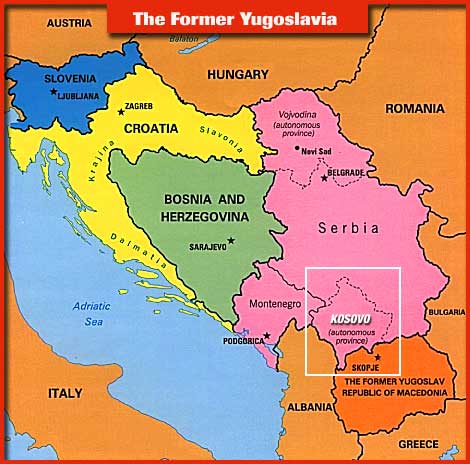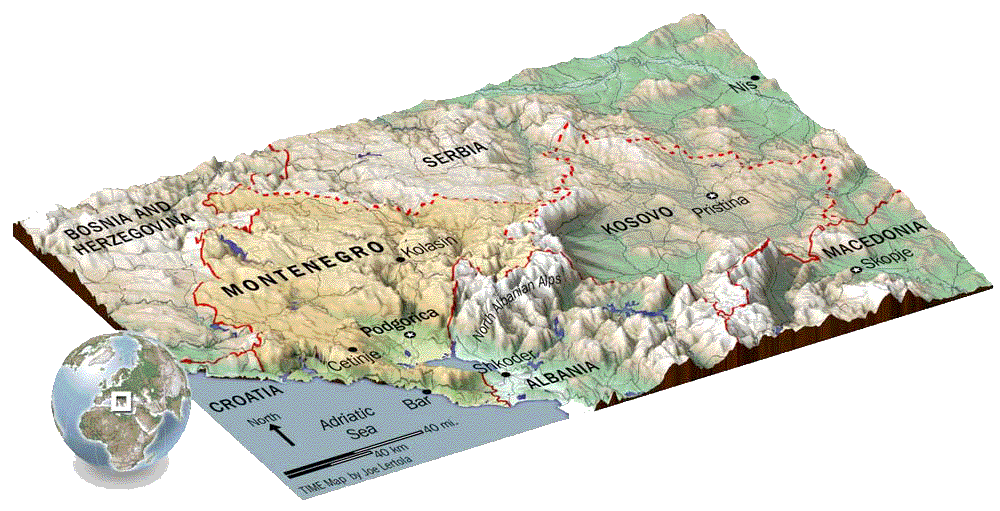| General Information About KOSOVA |
| Kosova is at present under temporary international (UN) administration, according to United Nations Security Council Resolution 1244. |
 |
 |
| At the heart of the Balkans, Kosova was part of the Roman Empire, then Byzantium, and part of the Ottoman Empire in the early 15th Century. Kosova became part of Yugoslavia before the First World War. Under German and Albanian influence during the Second World War, its place in Yugoslavia was reaffirmed after the conflict. Kosova became a province in the Socialist Republic of Yugoslavia (SFRY), and enjoyed a certain degree of autonomy from 1974-90 within SFRY and Serbia. The Yugoslav Republic began to break up during the early 1990's with Slovenia, Croatia and Bosnia breaking away from the state. An upsurge in violence in Kosova in 1998 drew the attention of the international community, leading to an eleven-week conflict in the spring of 1999. On 10th June 1999 the region was placed under United Nations administration, with the European Union and Organization for Security and Cooperation in Europe providing key parts of the interim government. KFOR, the NATO-led peace implementation force, provides military security. |
| Economic activity had been centered on industry, predominantly electric power, mining and metallurgy, construction materials and agro-processing. Agriculture was also important, being responsible for about a third of GDP in 1995. |
| The post-war Kosova economy has experienced high GDP growth. Estimates for 2000-01 arrive at double-digit growth rates (11% for 2001), while projections for 2002 and 2003 foresee growth rates of 7% and 4.5%, respectively. At purchasing power parities, the GDP per capita amounted to some USD 2700 in 2001. About 60 percent of the pre-conflict employment was created by agricultural activities (including forestry and agro-business). Unemployment was already high, due to long-term impacts of regional crisis. This unemployment rate was disproportionately high among ethnic Albanians. |
| Kosova has an area of 10,887 square kilometers (one third the size of Belgium). It is a geographical basin, situated at an altitude of about 500 meters, surrounded by mountains, and divided by a central north/south ridge into two sub-regions of roughly equal size and population. Detailed demographic data are not available - but the total 1998 population is believed to have been slightly above 2.2 million people, including about 90 percent ethnic Albanians. A large diaspora, mainly in Western Europe, plays an important role, particularly through remittances and the financing of the parallel structures developed throughout the 1990s. |
| Main facts Area: 10,887 sq km or 6,708 sq mi Capital: Prishtina Main language: Albanian Political system: Under direct UN administration (Local democratic institutions gaining in importance and competences) Net population: 2.2 million (mid-1998 estimate) Currency: Euro Enterprise Approx. 40,000 registered in the Private Sector. Approximately 300-350 Socially Owned Enterprises and 60 Public/Infrastructure Enterprises Natural Resources: Lead and Zinc, Copper, Silver, Gold, Brown Coal, Bauxite, Lignite, Nickel Main agricultural products: wheat, corn and grapes. |
| ECIKS / Albanian.com, �Kosova: General Information� Economic Initiative For Kosova. 2003-2004. ECIKS. October 14 2004 http://www.eciks.org/english/invest.php?action=total_invest&main_id=14. |
| Minorities include Serbs, Gorans or Bosnians (Muslim Slavs), Roms, and Turks. Demographic growth is estimated at about twenty per thousand and average household size is believed to be about 6 to 7 persons. Kosova�s population is by far the youngest in Europe, with about half the people below the age of 20. |
| CLICK IMAGE TO EXPAND |
| Topographical map of Kosova and surrounding countries |
| Albanian national flag |
| Map of formal federation of Yugoslavia |
